World War II saw the calculated and ruthless murder of 6 million Jews and 400,000 Gypsies by the Nazi Regime in an effort to “cleanse” the German population.
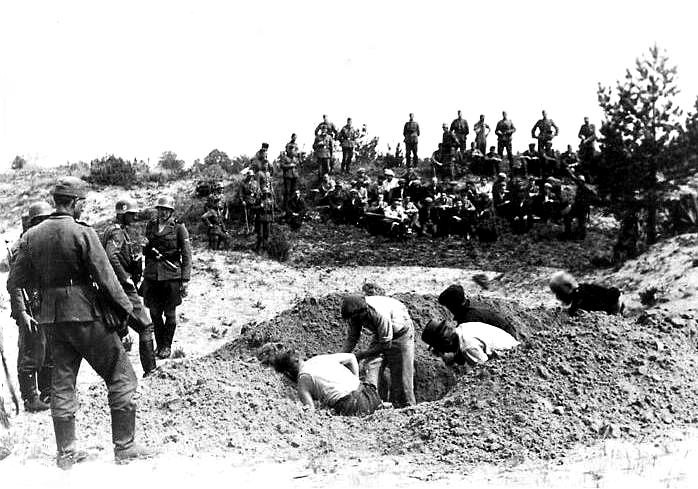
A subunit of the Einsatzgruppe A in a Soviet Union territory. The men condemned to death were forced to dig their own graves. Šiauliai, Lithuania,July 1941
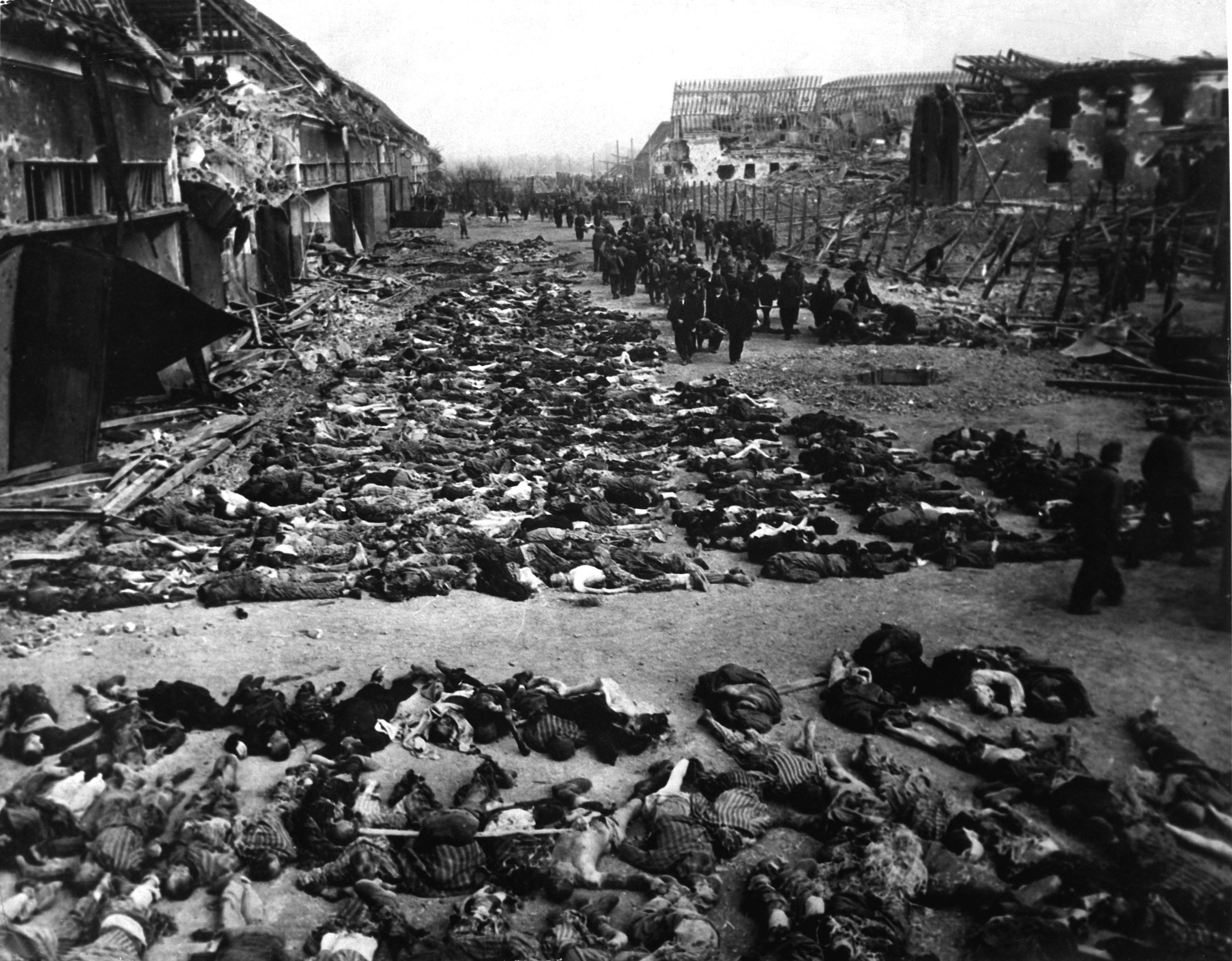
Rows of bodies fill the yard of the Boelcke-Kaserne (Boelcke Barracks) located in the south-east of the town of Nordhausen. The barracks was a subcamp of the Mittelbau-Dora Nazi concentration camp. Used as an overflow camp for sick and dying inmates from January 1945, numbers rose from a few hundred to over 6000, and the conditions saw up to 100 inmates die every day. Around 1300 inmates died on 3 and 4 April when British bombing raids destroyed substantial parts of the barracks during raids that destroyed three-quarters of the town a week before the US Army liberated it.
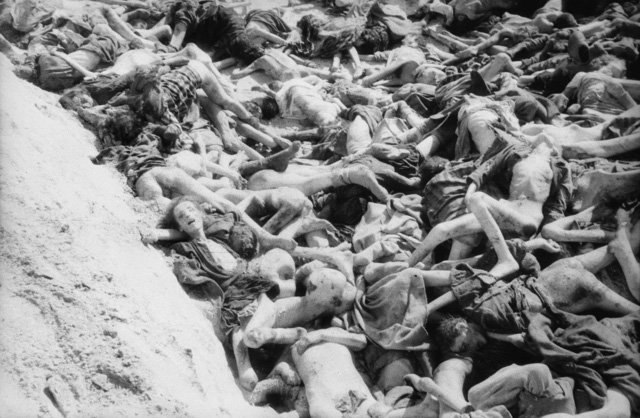
A broken and twisted mound of emaciated corpses lay strewn in one of three open burial pits. At the liberation of Belsen on 15 April 1945, British troops were faced with over 10,000 dead inmates who required immediate burial to halt the spread of typhus and other diseases which were rampant in the camp. Former SS (Schutzstaffel) guards were formed into work squads to bury the bodies and face responsibility for the victimization of their prisoners. Belsen, one of many Nazi concentration camps of the German Third Reich, was used as an instrument of genocide against Jews and those of other nationalities and categories. Photographer, VX93880 Lieutenant (Lt) Alan Moore, Australian official war artist, was present with the Allies in the liberation of Belsen. Whilst at Belsen, Lt Moore made several paintings, sketches and drawings as a record of Nazi atrocities committed against the predominantly Jewish inmates. A personal camera was used to record events observed in the Allied occupation of the camp and these black and white images also provide witness to one Australian’s experience of the Holocaust.
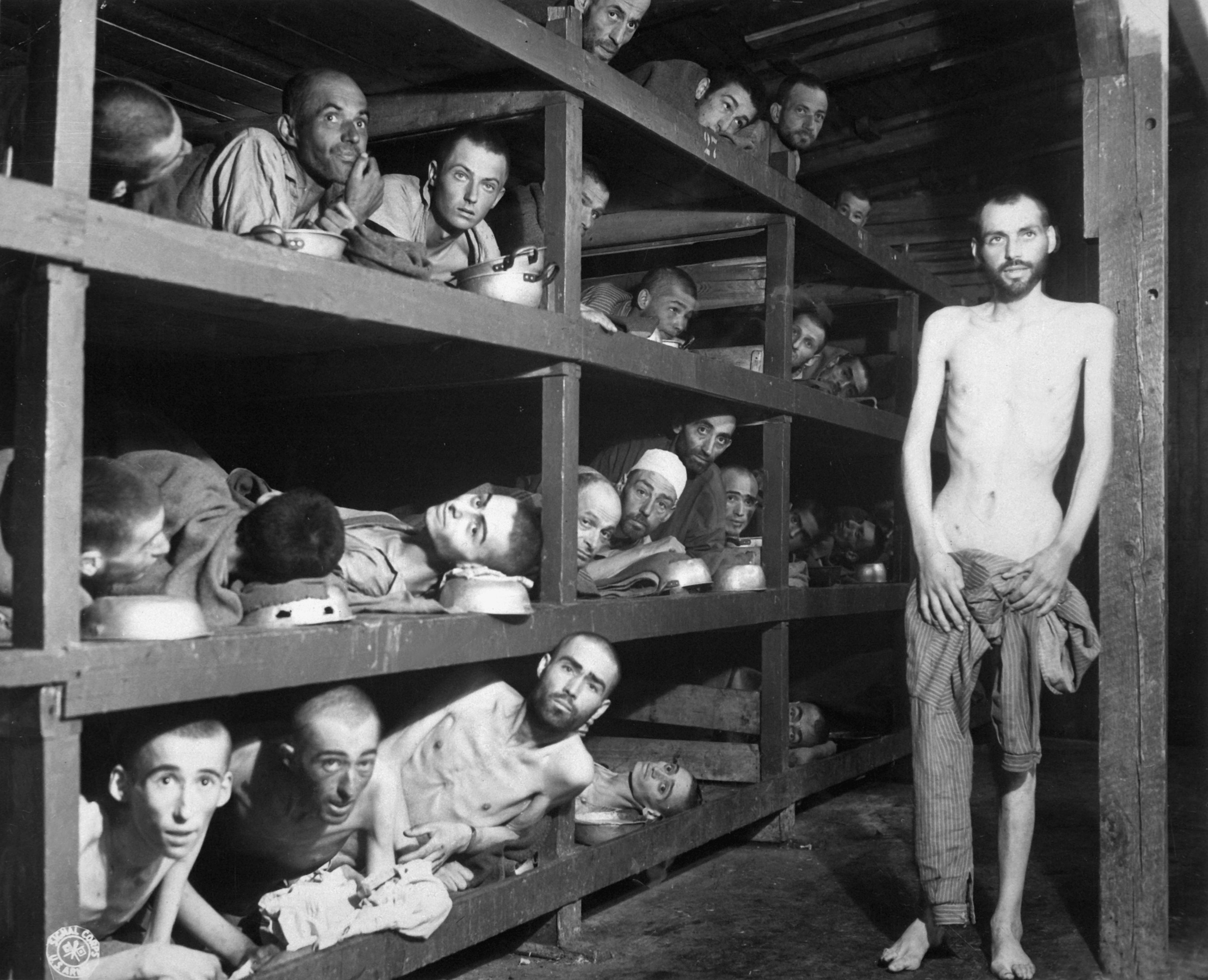
These are slave laborers in the Buchenwald concentration camp near Jena; many had died from malnutrition when U.S. troops of the 80th Division entered the camp. The very ill man lying at the back on the lower bunk is Max Hamburger, who had TBC and severe malnutrition. He recovered and became a psychiatrist in the Netherlands. Second row, seventh from left is Elie Wiesel. Photograph taken 5 days after rescue.
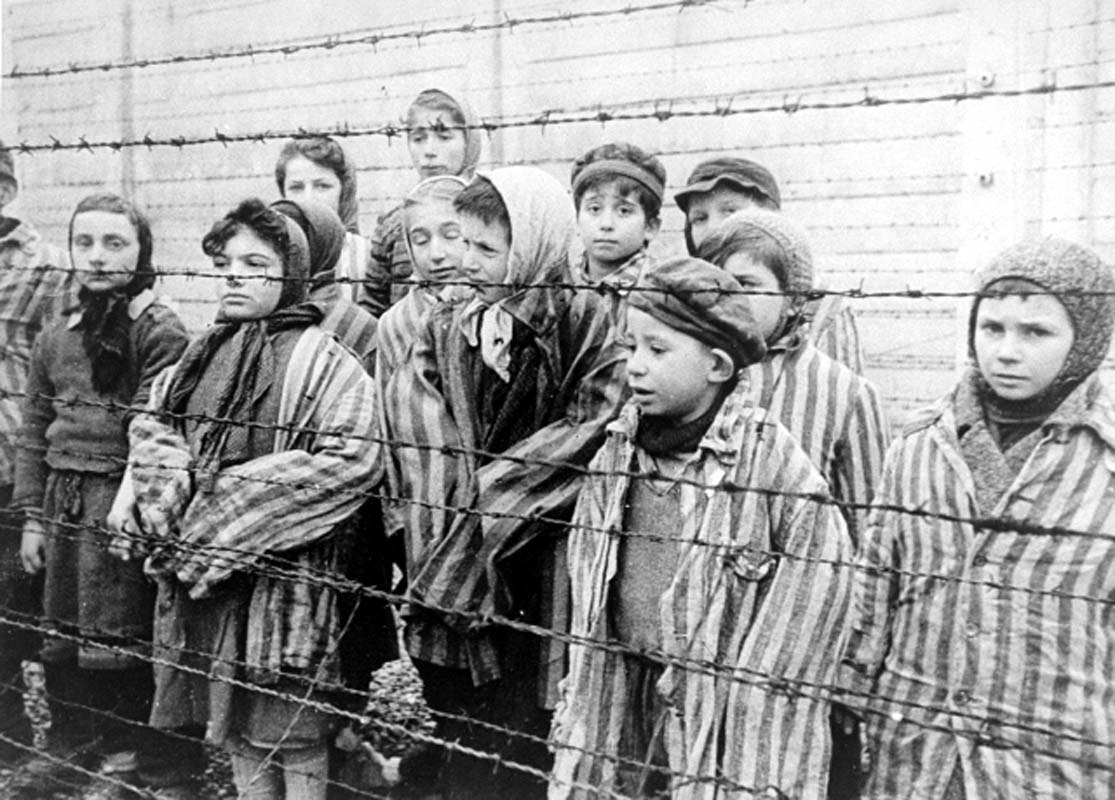
Still photograph from the Soviet Film of the liberation of Auschwitz, taken by the film unit of the First Ukrainian Front, shot over a period of several months beginning on January 27, 1945 by Alexander Voronzow and others in his group. Child survivors of Auschwitz, wearing adult-size prisoner jackets, stand behind a barbed wire fence. Among those pictured are Tomasz Szwarz; Alicja Gruenbaum; Solomon Rozalin; Gita Sztrauss; Wiera Sadler; Marta Wiess; Boro Eksztein; Josef Rozenwaser; Rafael Szlezinger; Gabriel Nejman; Gugiel Appelbaum; Mark Berkowitz (a twin); Pesa Balter; Rut Muszkies (later Webber); Miriam Friedman; and twins Miriam Mozes and Eva Mozes wearing knitted hats.

